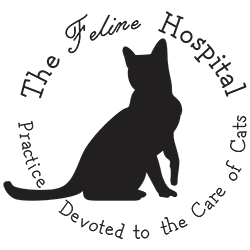Why Would a Cat Increase Their Drinking Amount or Frequency?

Our pet cats are ancestors of a small desert cat from northern Africa. Like many desert animals, their main hydration strategy is minimal loss of urine volume and staying hydrated instead of getting hydrated. Although there can be many causes for drinking water excessively, it is always a significant finding in this species. The symptom usually occurs along with excessive urination (PD PU in medicine, standing for polydipsia and polyuria) and is usually quickly notable in pet cats. Some cats will just enjoy water and everyone knows that Tigers and Leopards practically live in the water, but for most pet cats it is rare. It is even more certain to be significant if you note that an individual cat has an increased trend of water consumption.
I think too few cat owners realize that the urine volume loss occurs first in these patients. The excessive losses drive the increased thirst and the cat’s natural hydration strategy is immediately ruined. When excessive drinking is noted, the larger urine clumps in the box can often be quickly confirmed. The increased thirst observed is a normal response but rarely leaves the cat well hydrated. We must determine the cause and treat the pet appropriately. Housemate cats can offer an ideal opportunity for comparison. In spite of the symptom, the cats might even need fluid supplementation.
The cat’s best opportunity to hydrate is first through their diet. Canned food obviously serves them well with this goal. If water is consumed independent of diet, it should be a brief drink and a consistent trend within individuals. As I have mentioned in another blog, cats do not like their water to be offered in direct proximity to their food. They very rarely drink while eating. These are just separate tasks in the cat world. Water should be offered in multiple locations and never just next to the food dish. And please keep those slobbery dogs drinking in another location! We may also try to offer bottled or filtered water for better taste with some individual preferences. We can also find success by playing the hot water vs. cold water game in some kitties.
I immediately mention encouragement of water in cases of increased intake; because again, the losses occur first. We should never try to decrease urine output by limiting intake. Some of the losses cannot be reversed, like kidney disease. We need to work on hydrating these animals that are working outside of their true capacity. Seeing your cat doctor for a blood panel and urinalysis, with blood pressure measurement is a great place to start. Other common causes include hyperthyroidism, Diabetes Mellitus, and the most common in an older cat is kidney disease. The prognosis depends on each individual, stage of illness and which individual cause is to blame. Drinking excessively or more than has been normal should be investigated immediately
